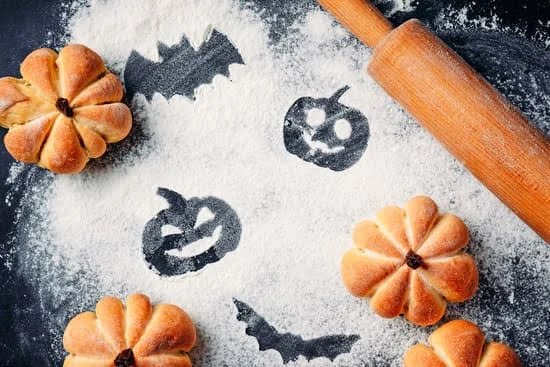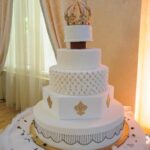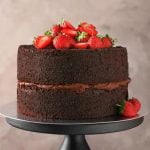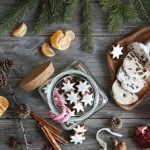Are you looking to learn how to decorate a plain cake and turn it into a masterpiece? Decorating a cake can be a fun and rewarding experience, allowing you to showcase your creativity and impress your friends and family.
Whether you’re a beginner or an experienced baker, this article will provide you with all the essential tips and techniques for decorating plain cakes like a pro. From preparing the cake for decoration to choosing the right frosting and applying creative decorating techniques, we’ve got you covered.
In order to successfully decorate a plain cake, it’s important to have the right tools and ingredients at your disposal. In this article, we’ll discuss the essential equipment and materials needed to get started on your cake decorating journey. Additionally, we’ll guide you through the step-by-step process of preparing the cake for decoration, ensuring that you have a flawless canvas to work with.
Once you’ve mastered the basics of preparing a plain cake for decoration, it’s time to explore different frosting options and application techniques. From buttercream to fondant, we’ll help you choose the right frosting for your cake and provide insights into how best to apply it for professional-quality results. So grab your apron and let’s get started on transforming that plain cake into a stunning work of edible art.
Essential Tools and Ingredients for Decorating a Plain Cake
Decorating a plain cake can transform a simple dessert into a stunning centerpiece for any occasion. To achieve professional-looking results, it’s important to have the right tools and ingredients on hand. Here’s what you’ll need to get started with decorating your plain cake.
First and foremost, you’ll need a set of basic decorating tools, including offset spatulas for smoothing frosting, an icing comb for creating textured designs, and piping bags and tips for adding intricate details. Additionally, having a turntable will make the process much easier by allowing you to rotate the cake as you work on it.
When it comes to ingredients, having a good quality cake recipe is essential. You’ll also need a delicious frosting or icing to cover the cake, as well as food coloring gels or powders if you want to add color to your design. It’s also helpful to have various toppings and garnishes on hand, such as fresh berries, edible flowers, or chocolate shavings.
For more elaborate decorations like fondant work or sculpted figures, you’ll need special tools such as rolling pins and sculpting tools. And if you’re interested in airbrushing techniques, investing in an airbrush kit will be necessary. By ensuring you have all the essential tools and ingredients ready, you’ll be well-equipped to bring your plain cake to life with beautiful decorations.
With these essential tools and ingredients at your disposal, you’ll be ready to start your journey into the world of cake decorating. Whether you’re a beginner or seasoned baker looking to elevate your skills, having these key items in your toolkit will set you up for success in creating visually stunning and delicious decorated cakes that are sure to impress.
Preparing the Cake for Decoration
When it comes to decorating a plain cake, the first step is to ensure that your canvas is flawless and ready for any design you have in mind. Preparing the cake for decoration may seem like a simple task, but attention to detail is essential for achieving professional-quality results. Here are some step-by-step instructions to help you ensure that your cake is perfectly prepared for decorating.
First, it’s crucial to level the top of your cake to create an even surface for decorating. Use a serrated knife or a cake leveler to carefully slice off any domed or uneven areas. Once your cake is level, it’s time to give it a crumb coat. A crumb coat is a thin layer of frosting that locks in any loose crumbs and provides a smooth base for additional decorations.
After applying the crumb coat, allow the cake to chill in the refrigerator for at least 30 minutes. This will help the frosting set and create a solid foundation for your final decorations. Once chilled, you can apply the final layer of frosting using offset spatulas or icing smoothers for a clean and polished finish. By following these steps, you can ensure that your cake is perfectly prepared and ready to be transformed into a stunning masterpiece.
Now that you know how to prepare your plain cake for decoration, you’re one step closer to creating a beautiful and delicious work of art. With careful attention to leveling, crumb coating, and frosting application, you can ensure that your canvas is flawless and ready to showcase your creative vision. Whether you’re planning on piping intricate designs or adding fondant accents, proper preparation is key to achieving professional-quality results when decorating plain cakes.
Choosing the Right Frosting
When it comes to decorating a plain cake, choosing the right frosting is one of the most important decisions you’ll make. The type of frosting you use can greatly impact the overall look and taste of your creation. There are several different options to consider, each with its own unique flavor and texture. From classic buttercream to smooth ganache, the possibilities are endless.
One popular choice for decorating cakes is buttercream frosting. This versatile option can be easily colored and flavored to fit any theme or taste preference. Its creamy texture makes it perfect for piping intricate designs, while also being easy to spread smoothly over the cake surface.
Another popular option is fondant, a smooth and pliable icing that can be rolled out and draped over the cake for a flawless finish. While it may take some practice to master working with fondant, the results are often worth the effort.
In addition to buttercream and fondant, there are also other options such as whipped cream, cream cheese frosting, and royal icing. Each type of frosting has its own unique application techniques, so it’s important to choose one that fits both your skill level and your desired design aesthetic when learning how to decorate plain cake.
| Type of Frosting | Application Techniques |
|---|---|
| Buttercream | Piping intricate designs; smoothing over cake surface |
| Fondant | Rolled out and draped over cake for a flawless finish; may take practice to master |
| Whipped Cream | Ideal for light, airy decorations; potential stability issues in warmer temperatures |
| Cream Cheese Frosting | Smooth spreading or basic piping; best used on refrigerated cakes due to its softer texture |
Creative Decorating Techniques
When it comes to decorating plain cakes, the possibilities are truly endless. Creative decorating techniques can transform a simple cake into a stunning work of art, and with the right skills and tools, you can unleash your inner cake artist. Whether you’re a beginner or an experienced baker looking to expand your repertoire, mastering different decorating techniques can take your cakes to the next level.
Piping Techniques
One of the most versatile and popular ways to decorate a plain cake is through piping. With the use of a piping bag and various tips, you can create intricate designs, borders, and even write messages on your cake. From classic rosettes to delicate lace patterns, piping allows for endless creativity and customization.
Working With Fondant
Fondant is another fantastic option for adding artistic flair to your cakes. This smooth, pliable icing can be rolled out and draped over your cake to create a flawless canvas for decoration. From sculpting figurines to creating 3D designs, fondant opens up a world of possibilities for expressing your creativity.
Advanced Techniques
For those looking to take their cake decorating skills to the next level, there are advanced techniques such as sugar pulling, painting with edible colors, and using isomalt for intricate sugar work. While these techniques require practice and patience, they can elevate your cakes to true showstoppers.
By mastering these creative decorating techniques, you can turn any plain cake into a stunning masterpiece that will impress friends and family alike. Experiment with different methods and find what works best for you as you unleash your inner cake artist. With practice and patience, you’ll soon be able to decorate plain cakes like a pro.
Adding Flair With Toppings and Garnishes
Once you have chosen the perfect frosting and applied it to your plain cake, it’s time to take your decorating game to the next level by adding flair with toppings and garnishes. Whether you want to keep it simple and elegant or go all out with a show-stopping design, there are countless options for embellishing your cake and creating a visually stunning masterpiece.
Here are some ideas for toppings and garnishes that you can use to elevate the visual appeal of your cake:
- Fresh Fruit: Adding slices of fresh fruit like strawberries, blueberries, or kiwi not only adds a pop of color but also brings a refreshing burst of flavor to your cake. Arrange the fruit in an artful pattern on top of the cake or around the edges for a beautiful presentation.
- Edible Flowers: Delicate edible flowers such as pansies, violets, or rose petals can add an elegant and whimsical touch to your cake. Just make sure they are safe for consumption and free from any pesticides before using them as decorations.
- Chocolate Shavings: Use a vegetable peeler to create delicate chocolate shavings from a bar of high-quality chocolate. Sprinkle the shavings over the frosting for an indulgent finishing touch.
- Nuts and Seeds: Chopped nuts like almonds, pecans, or pistachios can provide texture and crunch to your cake. You can also use seeds like toasted sesame or pumpkin seeds for a unique twist.
These are just a few examples of how you can elevate the visual appeal of your decorated cakes with toppings and garnishes. Get creative with different combinations and let your personal style shine through in your designs.
Remember that when choosing toppings and garnishes, it’s important to consider the flavor profile of your cake so that all elements work together harmoniously. Consider experimenting with different textures, colors, and flavors to create visually appealing compositions that will impress both the eyes and the taste buds.
Tips and Tricks for Professional-Quality Results
Techniques for Smoothing Frosting
One of the key elements in achieving a professional-looking decorated cake is the smoothness of the frosting. To create a flawless finish, start by applying a thin layer of frosting to the cake, also known as a crumb coat.
This initial layer will help to seal in any loose crumbs and provide a smooth base for the final layer of frosting. Once the crumb coat has set, use a bench scraper or offset spatula to carefully spread on the second layer of frosting, using long, even strokes to create an even surface.
Utilizing Different Piping Tips
Piping is a versatile and effective method for adding intricate designs and decorations to your plain cake. Different piping tips can be used to create various effects, from intricate lace patterns to delicate flower petals.
Experimenting with different tips and techniques can elevate your decorating skills and allow you to unleash your creativity. Whether you’re using a star tip for rosettes or a round tip for lettering, mastering the art of piping can take your cake decorating to the next level.
Creating Texture With Fondant and Gum Paste
Fondant and gum paste offer endless possibilities for adding texture and dimension to your decorated cakes. From sculpting 3D figures to creating intricate lace details, these versatile mediums can help you achieve professional-quality results.
With practice and patience, you can learn how to manipulate fondant and gum paste to create stunning decorations that will impress any audience. Whether you’re covering the entire cake with fondant or adding small accents with gum paste, these techniques are sure to take your plain cake from basic to breathtaking.
Showcasing Your Masterpiece
Once you have put in the time and effort to decorate a plain cake, it’s important to showcase your masterpiece in the best light possible. Properly photographing and presenting your decorated cake can make all the difference in how it is received and appreciated. Here are some tips on how to capture and display your cake like a professional:
- Lighting: Natural light is your best friend when it comes to taking pictures of your decorated cake. Find a well-lit area with indirect sunlight to show off the colors and details of your creation.
- Angle: Experiment with different angles to find the most flattering view of your cake. Consider shooting from above, at a slight angle, or even at eye level to highlight different aspects of your decoration.
- Backdrop: Choose a simple backdrop that doesn’t overpower the beauty of your cake. A clean, solid-colored backdrop or a wooden table can provide a timeless and elegant setting for your photos.
In addition to taking stunning photographs, you’ll want to think about how you present your decorated cake. Whether it’s for a special occasion or just for sharing on social media, here are some ideas for showcasing your creation:
- Display Stand: Invest in a beautiful cake stand that complements the style of your decorated cake. A stand not only elevates the presentation of your creation but also makes it easier to photograph from all angles.
- Decorative Accents: Add some extra flair to your presentation with decorative accents such as fresh flowers, edible glitter, or themed decorations that enhance the overall look of the cake.
- Slice Display: If you’re presenting the cake for an event, consider displaying a sliced portion alongside the whole cake so that guests can see both the exterior decoration and the interior layers and filling.
By paying attention to photography techniques and presentation details, you can elevate the impact of your decorated plain cake and truly showcase it like a pro. Creating visually stunning images and displays will not only impress others but also maximize your own enjoyment of seeing how far you’ve come in perfecting this sweet art form.
Conclusion
In conclusion, learning how to decorate plain cake is a skill that can bring great joy and satisfaction. By following the step-by-step instructions and utilizing the essential tools and ingredients outlined in this article, you can create beautifully decorated cakes that will wow your friends and family. The key is to embrace your creativity and enjoy the process of transforming a simple cake into a work of art.
Whether you choose to explore different frosting techniques, experiment with creative decorating techniques like piping or fondant, or add flair with toppings and garnishes, there are endless possibilities for expressing your unique style through cake decorating. Don’t be afraid to try new things and push your creative boundaries. You may be surprised at what you can achieve when you let your imagination run wild.
Lastly, don’t forget to showcase your masterpiece by photographing and presenting it like a pro. Share your creations on social media, at gatherings with friends, or even consider starting a small cake decorating business. The sweet rewards of cake decorating go beyond just the delicious end product – it’s about the joy of creating something beautiful and sharing it with others. So go ahead, grab your tools and get started on turning plain cakes into stunning works of art.
Frequently Asked Questions
How Do You Make a Plain Cake Look Nice?
To make a plain cake look nice, you can try adding a simple glaze or frosting in a contrasting color. You can also sprinkle some powdered sugar or cocoa on top for an elegant touch.
How Do You Jazz Up a Plain Cake?
Jazzing up a plain cake can be done by adding layers of fruit or whipped cream between the cake layers. You can also experiment with different flavored frostings and add some decorative toppings like chocolate shavings or fresh berries.
How Do You Decorate a Normal Cake?
Decorating a normal cake can be done by piping on colorful buttercream flowers or designs. You can also use fondant to create intricate shapes and patterns, or even add edible decorations like sprinkles, candies, or edible flowers for a festive look.

Welcome to our cake decorating blog! My name is Destiny Flores, and I am the proud owner of a cake decorating business named Cake Karma. Our mission is to provide delicious, beautiful cakes for all occasions. We specialize in creating custom cakes that are tailored specifically to each customer’s individual needs and tastes.





